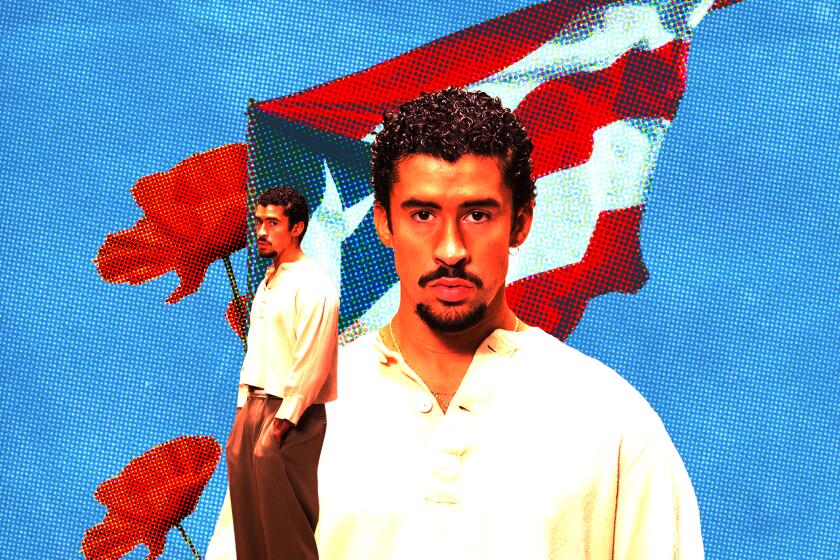Latinx Files: Why we love Día de Muertos
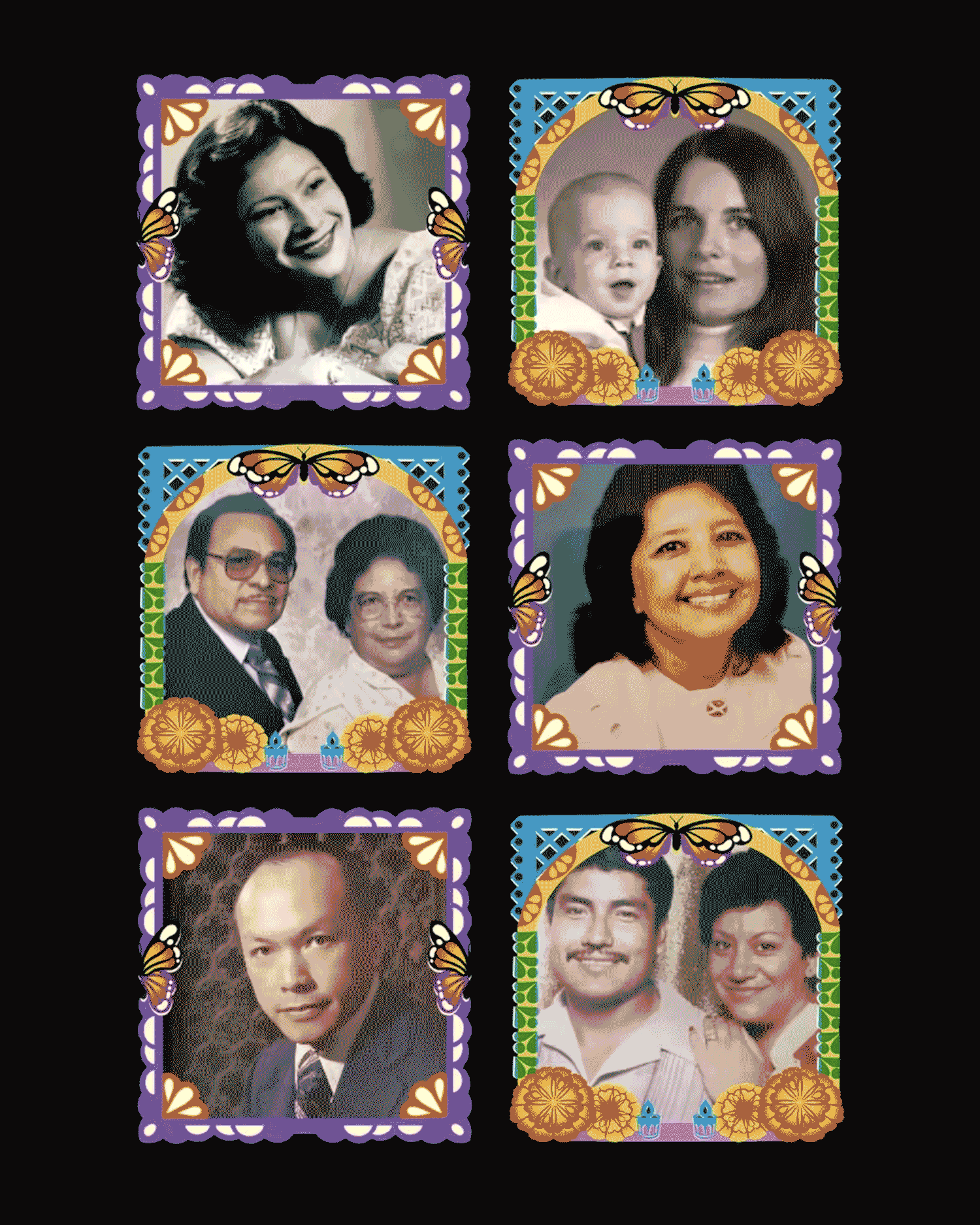
“Is this sad?”
I was manning one of two tables the De Los team had set up by our altar at the Hollywood Forever Día y Noche de Muertos on Saturday when this question was posed to me by a woman who had walked up with her young daughter.
It was the second consecutive year The Times has had a presence at the annual event — one of the largest in the country commemorating the holiday. As we planned our Día de Muertos coverage, De Los community editor Jessica Perez had the brilliant idea of having dedication cards in the shape of a cempasúchil. Attendees filled these out with a memory of a loved one who had passed on and placed them on our beautiful altar by artist Ricardo Soltero. We intended to create a communal experience.
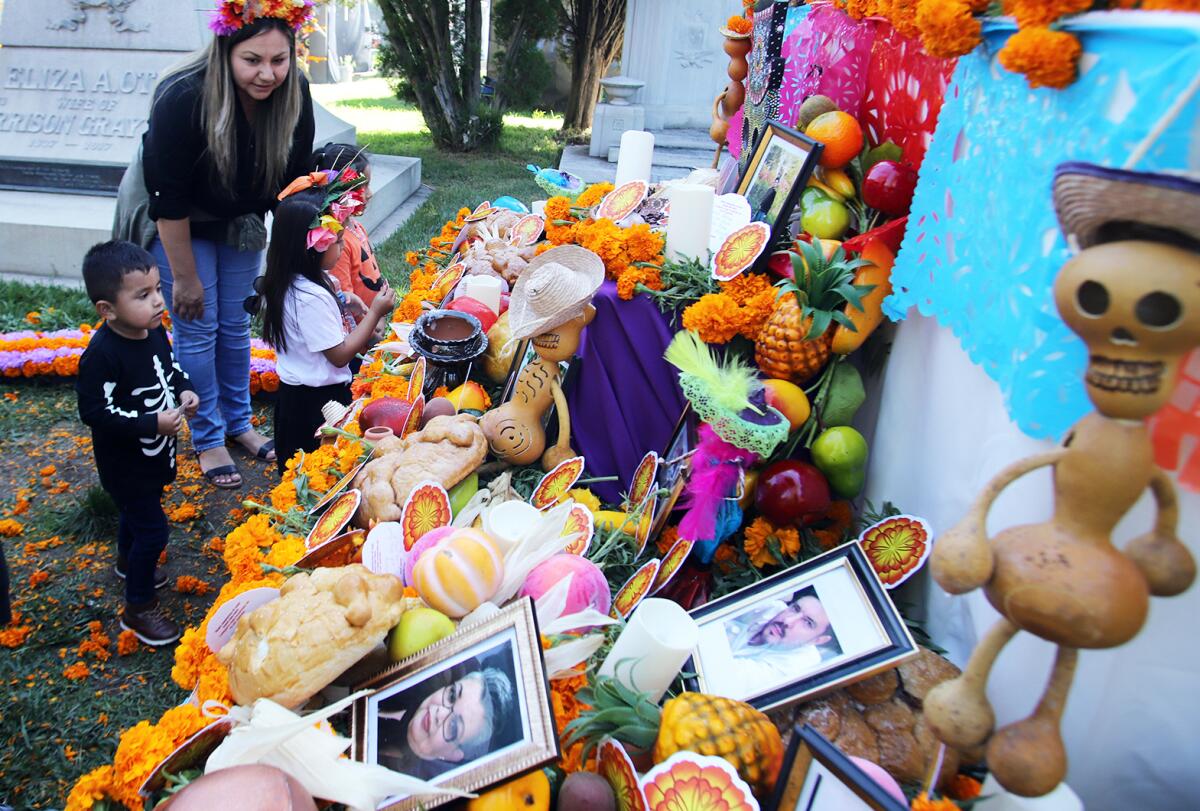
I suspect by the somber look on that woman’s face that she was thinking out loud, but I went ahead and answered her anyway. I told her that yes, there is an inherent sadness to death, but just because someone dies, it doesn’t mean they’re no longer with us. These cards, I said, were a way to remind ourselves of that.
She didn’t reply. Instead, she grabbed a pen and started filling one out. The woman then told her young daughter to grab a card for herself, and to draw something that reminded her of her grandfather. The little girl drew a plane because he loved traveling.
Once they were done, the duo walked away and more people took their place. By the end of the night, our altar was overflowing with more than a thousand dedication cards, which still blows my mind.
It shouldn’t though.
The Latinx experience chronicled
Get the Latinx Files newsletter for stories that capture the multitudes within our communities.
You may occasionally receive promotional content from the Los Angeles Times.
If I’ve learned anything from working on the Times’ digital altar project it’s that people embrace any opportunity to celebrate the life of someone they have lost. The desire to create a record that said person mattered a lot to someone is there.
That’s the explanation that Eduardo Arreola from Huntington Park gave me when I asked why he had been among the more than 1,700 (and counting) people who had digitally submitted an ofrenda to this year’s altar.
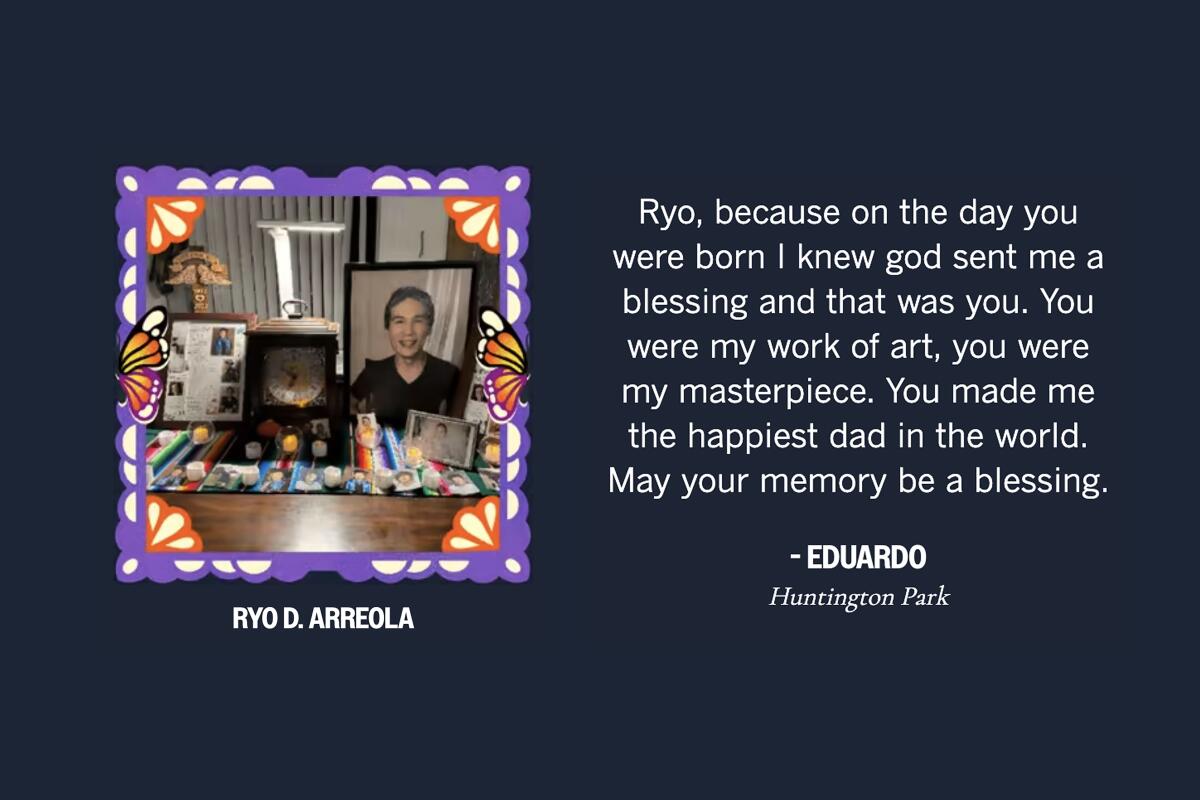
Arreola’s submission was for his son Ryo, who died in 2022. He was 29.
“My main reason is to share my son’s story with the world,” he said by text message, proudly adding that Ryo had been his high school’s valedictorian and had graduated magna cum laude from UCLA.
“The [ofrenda] will live forever,” Arreola said. Or at least for as long as The Times’ archives exist on the internet.
And that’s beautiful, isn’t it? To know that even though none of us can live forever, a part of us will still keep on existing for as long as someone cares to remember us?
“I have family members that my kids have never even met, but they see a photo every year on our altar at home and they’re like, ‘Oh, remember the story when this and that happened?’,” said Lorraine Gonzalez, a Latinx Files newsletter reader from Austin.
“Sometimes all we have are the stories we pass down from our generations.”
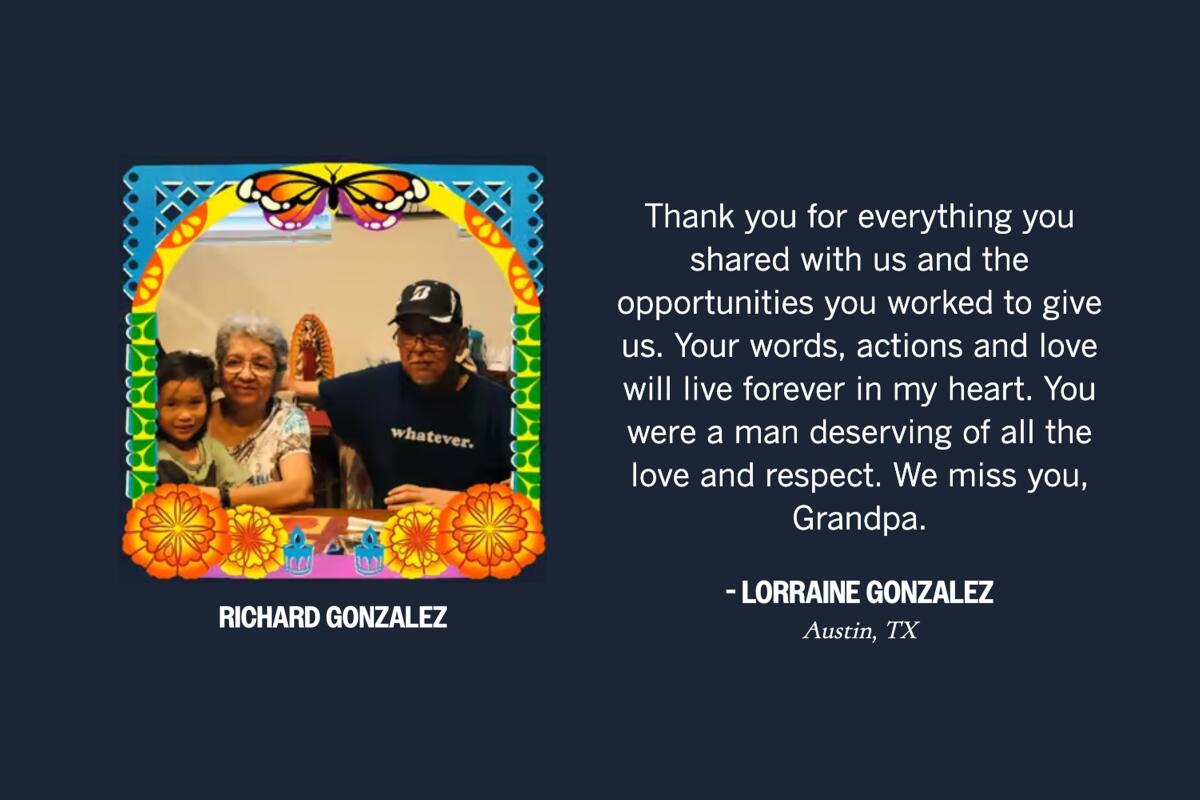
I reached out to Gonzalez after picking her submission to this year’s digital altar at random; I was curious to learn more about why readers were compelled to contribute so I called her up.
Gonzalez says she chose to share a lovely note about her grandfather Richard so that her grandmother, who lives two hours away, could see that his memory was being kept alive.
Gonzalez recounted getting on FaceTime with her grandmother and watching her scroll through the digital altar on her iPad. She began to cry the moment she came across her late husband’s photo.
Consider subscribing to the Los Angeles Times
Your support helps us deliver the news that matters most. Become a subscriber.
“My grandfather didn’t have a funeral, so these little public declarations really meant a lot to her,” said Gonzalez.
As we wrapped up our call, I asked Gonzalez why she thought this project had resonated with people. For her, it was simple: death and loss are universal.
“To be able to see people from other states and other cities who are remembering their loved ones the same way you do, it makes a big community seem really small, welcoming and warm.”

Things we read this week that we think you should read
From the L.A. Times
Gray hairs sprout near Hector De La Torre’s temples, and his gait is slower than before. But the longtime southeast Los Angeles County politician still looked every part the civic boy wonder when I met him on a recent morning in his hometown of South Gate.
I grew up afraid of ghosts. The elders in my Mexican family welcomed the dead, but they observed Día de Muertos quietly.
La cinta ganadora del ‘Premio a la Favorita’ del Festival de Sundance y que esta semana celebró su premiere en Los Ángeles, abre una ventana a la realidad estudiantil que no se ha podido cambiar en años y que seguramente nunca se hará
A mecca for mezcal: These are the best agave bars in L.A
While tequila has had a couple of centuries to gain an international following, the rise of mezcal and regional spirits like sotol and bacanora is more recent.
From De Los
Column: How a James Bond film made Día de Muertos absurd, in a fun way
The Día de Muertos parade is a sumptuous, extravagant delight. It might surprise some to hear that the parade stemmed from a single scene in a James Bond movie in 2015.
From ballroom to DJing, artist BabiBoi wants to make a name for themselves in the music industry
BabiBoi wants their mixtape not only to showcase their own diverse tastes but also to feel representative of the various clubs they’ve established themselves in.
L.A. ‘Hood Witch’ Bri Luna debuts new book ‘Blood Sex Magic’
Luna, who was born in Los Angeles to Indigenous Mexican and African American parents, decided that the witching world needed a more inclusive resource for young witches of color.
These Latines are normalizing alcohol-free spaces for la cultura
Alcohol-free spaces are a way to foster inclusion and well-being, while dismantling the standards of alcohol consumption that were rooted in colonialism.
How does nature inspire us? These Latino poets dig deep into their roots
Poet José Olivarez curates the De Los Latino poetry series in which poets reflect on their relationship with nature.
From other parts of the internet
Latino voices on family, sports, legacy, music, tradition and language
Several Washington Post staffers determined to highlight the richness of their Latino culture decided to share their personal experiences through short essays.
The Latinx experience chronicled
Get the Latinx Files newsletter for stories that capture the multitudes within our communities.
You may occasionally receive promotional content from the Los Angeles Times.


